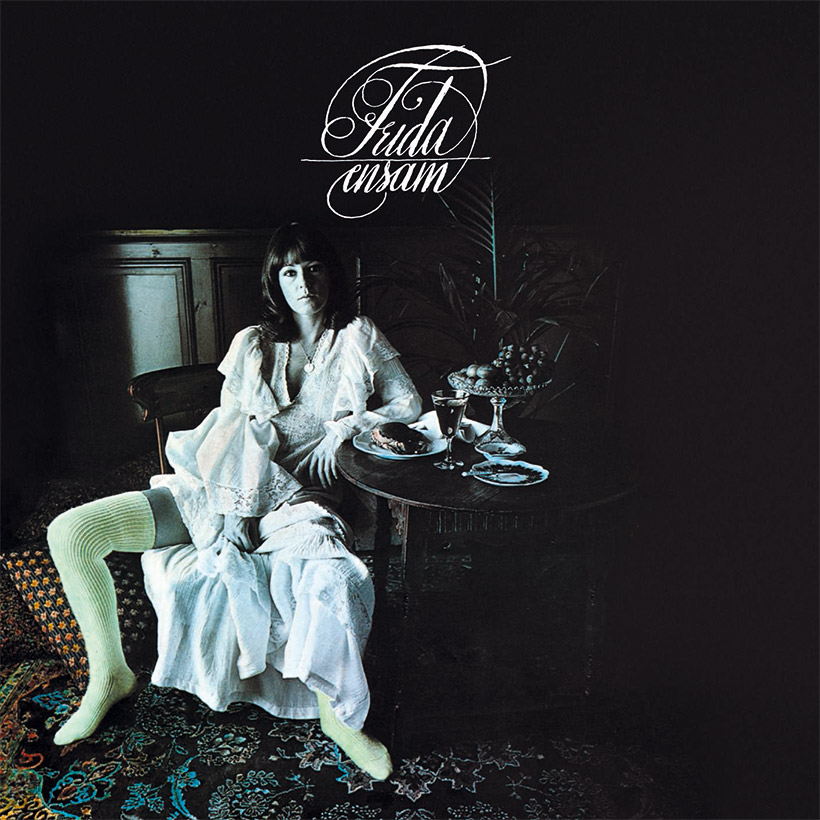The canny marketing hook of launching Frida’s second solo album – and the first to be recorded while a member of ABBA – with a new song that would later give her band a worldwide No. 1 was a stroke of genius. Her solo version of “Fernando” was never issued commercially as a standalone single in her home country, forcing anyone wanting to own a copy of the substantial radio hit to go out and buy the 11-track album, Frida Ensam, which, released on November 10, 1975, would eventually sell around 130,000 copies. Only in the neighboring Norway did “Fernando” make a single release, but there it surprisingly failed to chart, making it today one of the rarest ABBA-related 7” singles prized by collectors.
Listen to Frida Ensam on Apple Music and Spotify.
Frida Ensam (Frida Alone) was recorded in stops and starts across 18 months as the juggernaut that was ABBA interrupted sessions for recording and promotional work that prioritized the Waterloo and ABBA albums. Frida’s then-fiancé and bandmate Benny Andersson produced the album that, excluding “Fernando,” was a collection of covers reflecting the couple’s eclectic musical tastes. The high drama of Italian power ballads such as “Anima Mia,” which had been released a couple of years earlier by Cugini Di Campagna, was balanced by more familiar, lighter fare such as a version of 10cc’s “The Wall Street Shuffle.”
Like all covers projects, fresh interpretation can be a mixed blessing and, for songs as familiar as Gary Puckett And The Union Gap’s “Young Girl” (as “Jag är mej själv nu”) – a worldwide hit in 1968 – its remodeling as a mournful ballad drifting across a light calypso orchestration is surprising. On David Bowie’s “Life On Mars?” (“Liv på mars?”) there’s less attempt to mix things around, and it’s as strong a cover as any of this much-cherished classic. The Beach Boys’ “Wouldn’t It Be Nice” (“Skulle de’ va’ skönt”) is another fairly straight treatment that lifts all of its lighter pop sensibilities to the surface and, on this interpretation, might so easily have come from the Benny and Björn songbook.
The Swedish lyrics – the entire album is recorded in Frida’s first language – make for an interesting contrast. “The Wall Street Shuffle” is reimagined as “Guld och gröna ängar” (“Gold And Green Fields”), but other translations are more literal and, in truth, Frida’s powerful vocals carry this collection confidently, whether you speak the language or not.
Frida’s early success with schlager – the continental folk-pop that underpins much of ABBA’s music and maintains consistent popularity to this day – is evident here, but her haunting interpretation of “Send In The Clowns” (“Var är min clown”), from the Stephen Sondheim musical A Little Night Music, soars into a league of its own and showcases her sharp-as-crystal vocals to fantastic effect. The respected writer Theodor Kallifatides wrote of Frida, “Her voice captures notes as precisely as it does the listener’s hearts,” and this recording encapsulates that statement so succinctly.
For the unfamiliar, the central question concerning all solo ABBA projects is how closely they echo the supergroup’s spellbinding blueprint. Frida Ensam is a through and through pop album, and that once-in-a-generation voice let loose on a range of the familiar and less well known certainly makes for comfortable acclimatization. It was the chemistry of the four musicians that blended so spectacularly together, but there’s evidence aplenty that more than enough magic could be found in each quarter.



